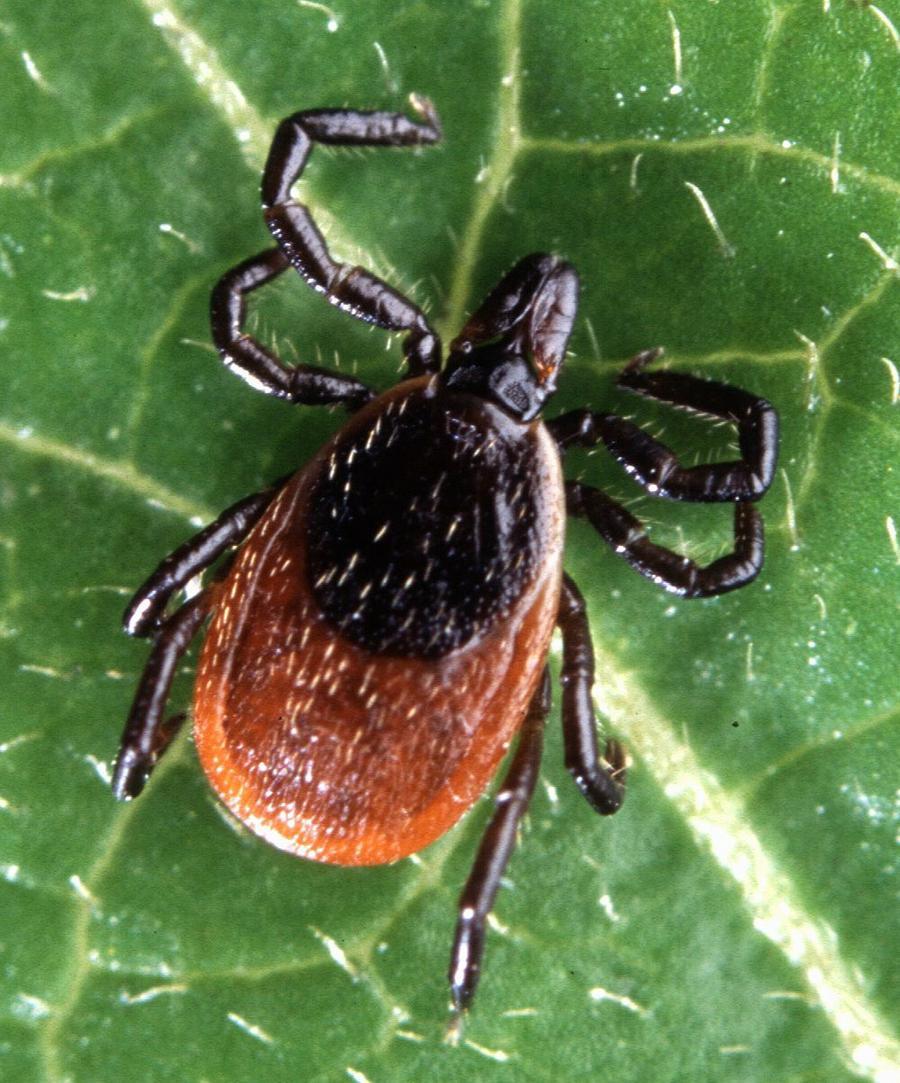The U.S. Department of Agriculture recently granted the College of Veterinary Medicine $460,000 for professor of parasitology Roger Stich’s research project on tick-borne diseases, specifically anaplasmosis.
Stich, among other professors and graduate students at MU, will research alternative approaches to interfere with the pathogen in ticks. When diseased ticks feed on livestock, they can spread the disease to the animals.
This is just the beginning of what is projected to be a three-year-long project, Stich said. He and his team have been working on it since about June, when they were first awarded the grant.
“It’s going to be a long process. In fact, it may be one of those guys,” Stich said, pointing to graduate students Kyle Hoffman and Sammuel Shahzad, “that finishes it up.”
Stitch said there has already been a lot of work done before them. The team uses information found from previous research done on ticks, the biology of ticks and the biology of tick-borne pathogens.
“So this is really just another step toward the goal of being able to mitigate tick-borne diseases,” Stich said.
Stich emphasized the seriousness of these pathogens. There are several tick-borne diseases of cattle that heavily impact agriculture. The team is conducting research using anaplasmosis, a disease that can cause anemia, jaundice and even death in cattle. Anaplasmosis is one of the five major vector-borne diseases of cattle worldwide, Stich said.
The research team will be targeting the tick molecules that the pathogen relies on. Because of that, they hope they will be able to understand how to interfere with other pathogens as well.
The project will consist of many experiments done multiple times to test how the pathogen responds. The experiments will involve ticks that the team will purchase from vendors and view with molecular and microscopic techniques. They will then allow the ticks to “feed” on cattle and study how the animals respond. The team wants to see how well the immune system of the cattle interferes with the pathogen from the tick.
After they find out how to protect the cattle from the pathogen and tick, they will identify what to target in that animal to make it healthy. Once that is identified, more tests will follow and, hopefully, a vaccine can be created.
“It’s a lot of work; in some ways it’s too much work,” Stich said. “That’s why I have to have two graduate students working on it. And even with two hard-working grad students like these two, we might still need more help.”
Hoffman said most of the day he and Shahzad are doing experiments and it’s their top priority right now.
“Start early, end late,” Hoffman said, referring to his and Shahzad’s schedule. “That’s what research is all about.”
Right now Hoffman is working on two-dimensional electrophoresis, meaning he’ll be able to look at what proteins in the tick will be targeted by the new response of the cattle. Shahzad is working on being able to identify the level of infection that a tick is affected with.
Other professors have helped Stich with this project along the way, including associate professor of epidemiology and public health Patrick Pithua and professor of veterinary pathobiology Gayle Johnson. In addition, Stich has worked with Sathaporn Jittapalapong, who was one of Stich’s first graduate students years ago. Jittapalapong is now dean of veterinary technology and a professor at Kasetsart University in Bangkok, Thailand.
“[Jittapalapong] is a good collaborator even though we’re thousands of miles apart and we don’t see each other very often,” Stich said. “We communicate by email several times a week.”
Stich also said that the project stems from Jittapalapong’s dissertation work about 17 years ago.
Interim Dean of the College of Veterinary Medicine Carolyn Henry also helped Stich submit the grant application and provided facilities for him and his team to use for experiments. However, she said, the real work is all attributed to Stich’s dedication.
“This project is because of [Stich’s] patience,” Henry said. “All credit truly goes to him.”
Stich had to reapply for the grant a number of times before he was finally awarded it. Henry confirmed that Stich had spent months on each application over several years.
The total cost of the grant is split two different ways. The direct cost goes toward the project and the indirect cost is what the university uses for upkeep of labs and other bills.
The direct cost is about $320,000, Stich said. The money goes really fast, he explained, and he’s a little concerned it won’t all last for the next three years. The team has already had to buy new equipment to replace broken items and will have to pay for graduate student stipends and fully pay for the experiments they will be conducting.
“[The money] goes fast; research is very expensive,” Stich said. “It’s amazing how quickly the expenses add up.”
Henry said that a lot of investigators and researchers feel this way and felt assured that it would be enough to last the next three years. She said it is a “very reasonable budget.”
Henry said Stich is a “very talented investigator.” She also said he’s a good example of how the university works together with other people of expertise, such as Jittapalapong.
“That’s what makes our university very special,” Henry said.
This is just the beginning, Stich explained. He hopes to see results when the research team officially begins experiments on the ticks and pathogens in cattle.
“[The research team is] very excited and jazzed, and we can’t wait to start seeing results,” Stich said. “We’re slowly getting there, but we’re getting there.”
_Edited by Olivia Garrett | [email protected]_














